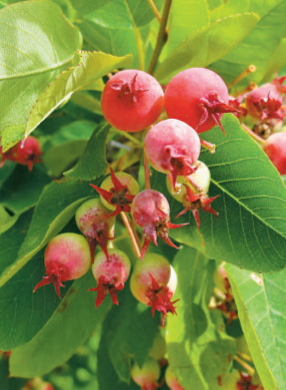Unlike annual or perennial flowers, trees aren’t easy to move. Once you select and plant a tree, where it’s planted is where it stays. In other words, it’s important to choose trees carefully for your yard and garden. To pick out the right trees for your yard and garden, you should examine certain characteristics of the trees you’re considering, including leaf color, flower color, and mature size. Here’s what you need to know when you go shopping for trees.
What You’ll Need
![]() Measuring tape
Measuring tape
![]() Notebook and pen
Notebook and pen
![]() Notes about the area you want to plant the tree
Notes about the area you want to plant the tree
Instant Green Thumb
Something to note when shopping for trees: the term “dwarf” on a plant tag doesn’t mean that a tree will stay small. It means that the tree is a smaller, slower-growing version of the native species. “Dwarf” evergreens can still grow to heights of 20 or 30 feet over time, so make sure there’s room for these trees to grow where you plant them.
Tree Characteristics to Consider
Maintenance
If you don’t enjoy yard work, you’ll want to select trees that are easy to care for. Here are some choices.
Less (little pruning, few pest problems)
• Redbud
• Red maple
• Blackgum
• Hornbeam
• Katsura
• Alaska falsecypress
• Meserve holly
• Tree lilac
• ‘Little Gem’ magnolia

Redbud
More (more pruning, messy, or disease-prone)
• Mimosa (messy)
• Southern magnolia (messy)
• Sweetgum (messy)
• Sycamore (messy)
• River birch (disease-prone)
• Hawthorn (disease-prone)
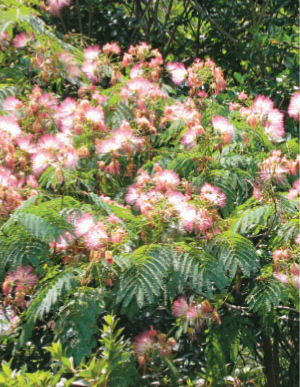
Mimosa
The mature size of the tree is the size (height and width) the tree will be after it grows to maturity, sometimes in 20 to 40 years.
Small
Small trees grow no taller than 20 feet. These trees are good to plant in foundation beds (landscape beds next to the house), or to provide height in an island bed (larger landscape bed in the lawn).
• Serviceberry
• Japanese maple
• Star magnolia
• Kousa dogwood
• Crape myrtle

Crape myrtle
Medium
Medium-sized trees reach a mature height of 20 to 40 feet. They are great for landscape beds that extend away from the house at least 20 feet into the yard.
• Redbud
• Flowering plum
• Crabapple
• Carolina silverbell
• ‘Little Gem’ magnolia
• Golden raintree
• Zelkova
• Weeping cherry
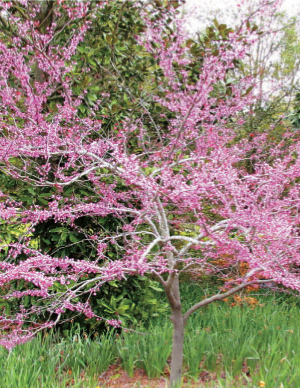
Redbud
Large
Large trees grow to heights of 50 feet or more, and make great shade trees. Give these trees lots of room to grow.
• Tulip poplar
• Beech
• Princess tree
• Sugar maple
• Sweetgum
• ‘Autumn Purple’ ash
• Red oak
• Honey locust
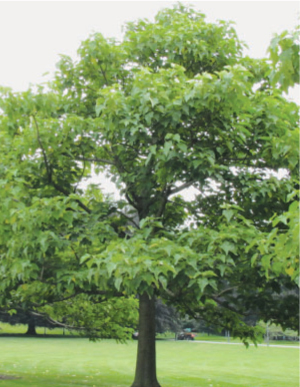
Princess tree
Trees have interesting features, including colorful berries, different leaf shapes, cool colors (even during the summer), and unique bark. Consider these attributes when tree shopping.
Flowers
Plant these flowering trees for extra pizzazz in your yard:
• Carolina silverbell
• Crape myrtle
• Star magnolia
• Flowering dogwood
• Cherry
• Smoketree

Carolina silverbell
Fruits
Plant trees with interesting fruits only if you like to spend a lot of time in your yard or garden because fruits can be messy, meaning you’ll have to spend some time cleaning them up, and you usually need to be close to the tree to observe and enjoy the fruits. Plant these for their pretty or unusual fruits:
• Magnolia
• Hornbeam
• Pawpaw
• Kousa dogwood
• Chinese fringe tree
• Golden raintree
• Osage orange
• Smooth sumac
• Burr oak
• Yellow birch
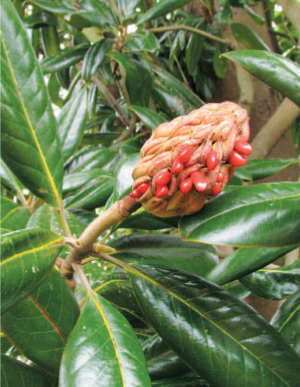
Magnolia
Leaves
Many deciduous trees (trees that lose their leaves in the fall) have interesting leaf shapes during the summer and pretty color in the fall, two good attributes for landscape trees.
• Blackgum
• Sweetgum
• Autumn purple ash
• Bald cypress
• Flowering dogwood
• Japanese maple
• Native American plum
• Sugar maple
• Aspen
• River birch
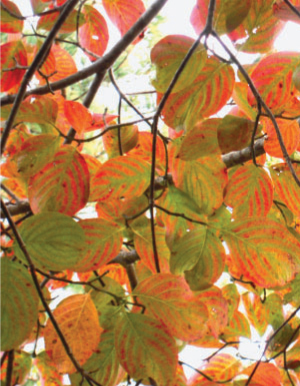
Dogwood
During the winter when there are no leaves on the trees, interesting bark is a gardener’s best friend. These trees are beautiful, even in the winter.
• River birch
• Crape myrtle
• Paper birch
• Hornbeam
• Beech
• Paperbark maple
• Dawn redwood
• Scotch pine
• Sycamore
• Gumbo limbo

River birch
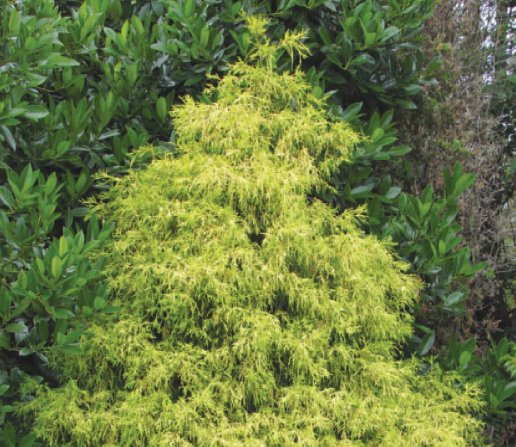
Falsecypress
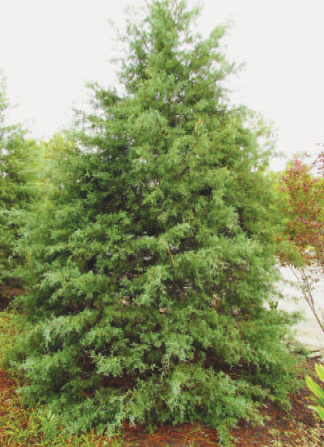
Carolina sapphire juniper
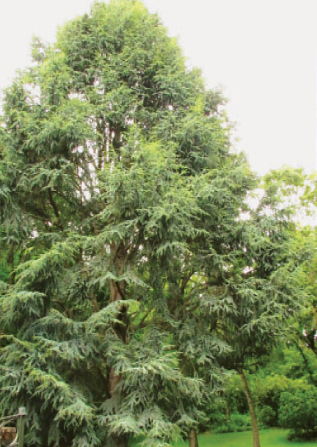
Atlas cedar

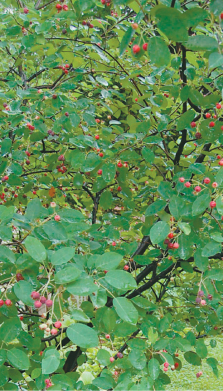
Serviceberry fruit
